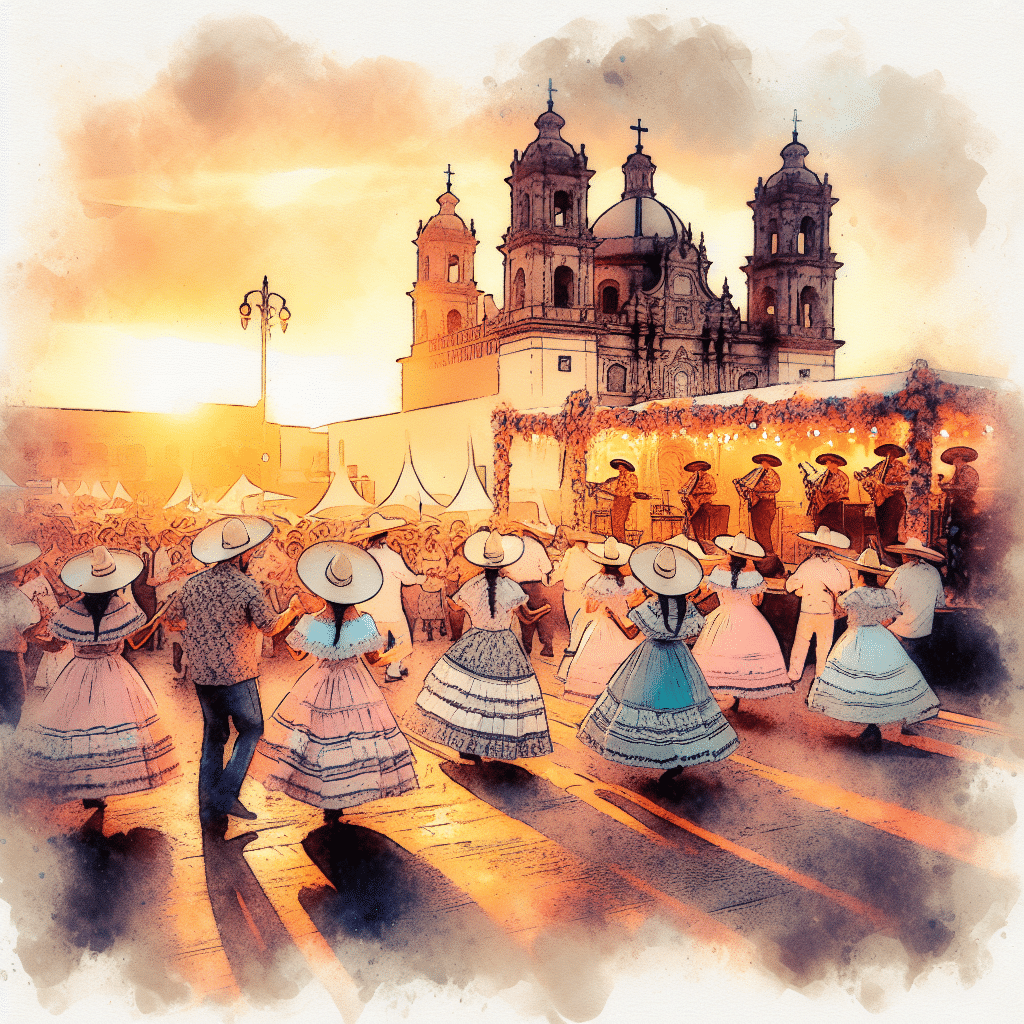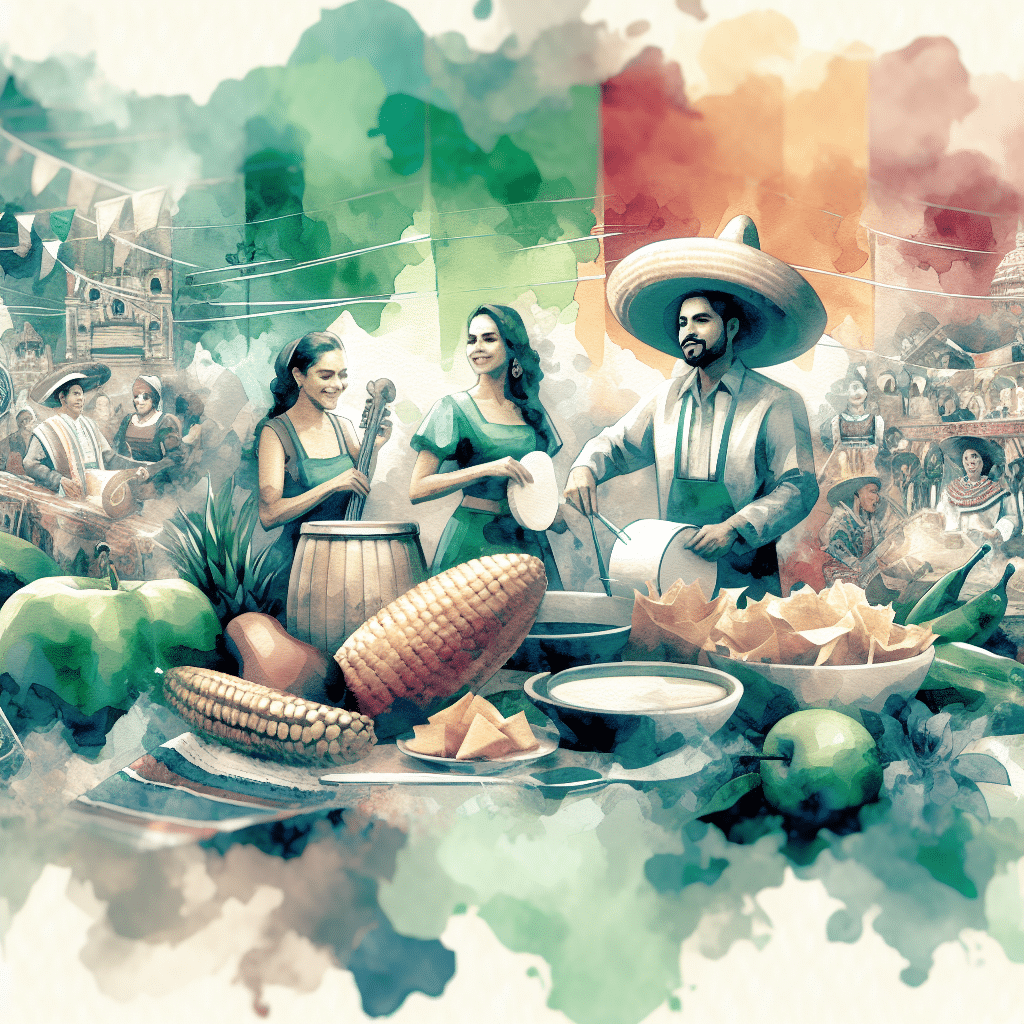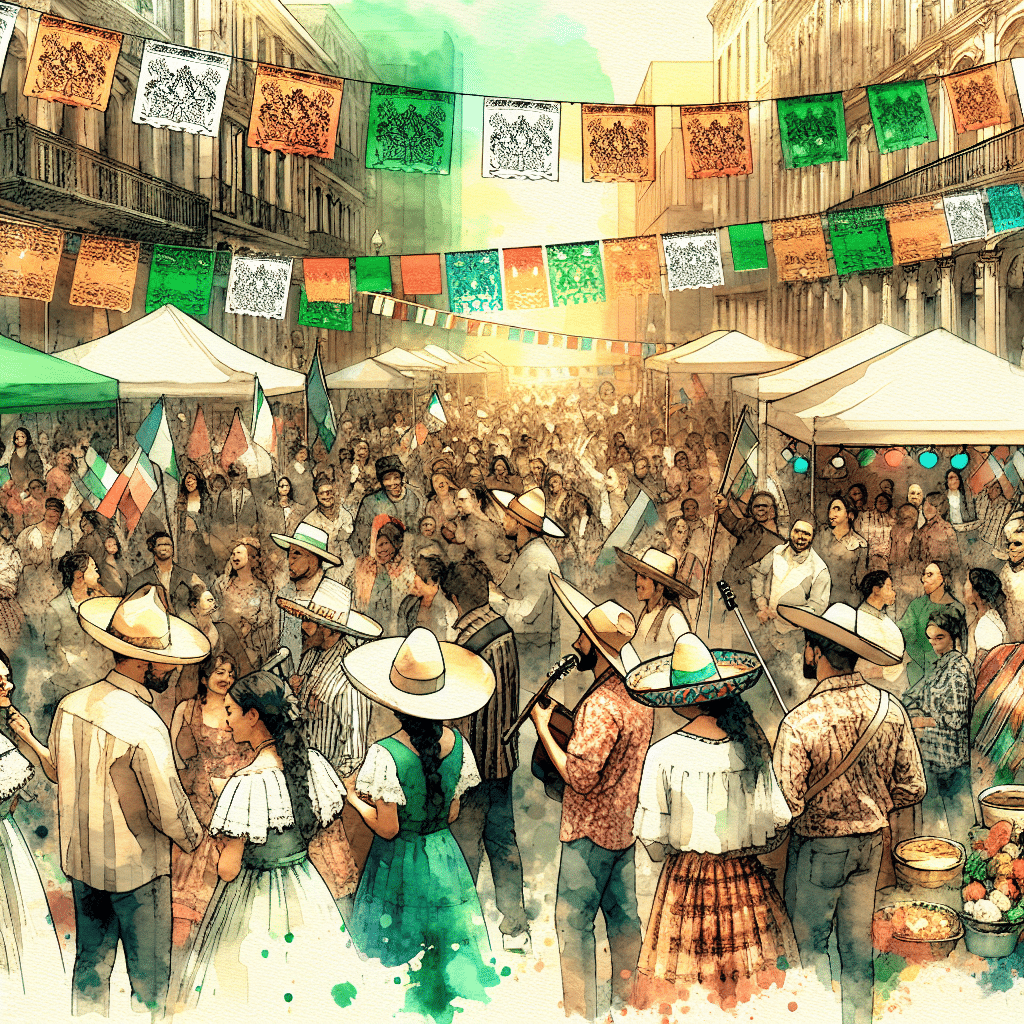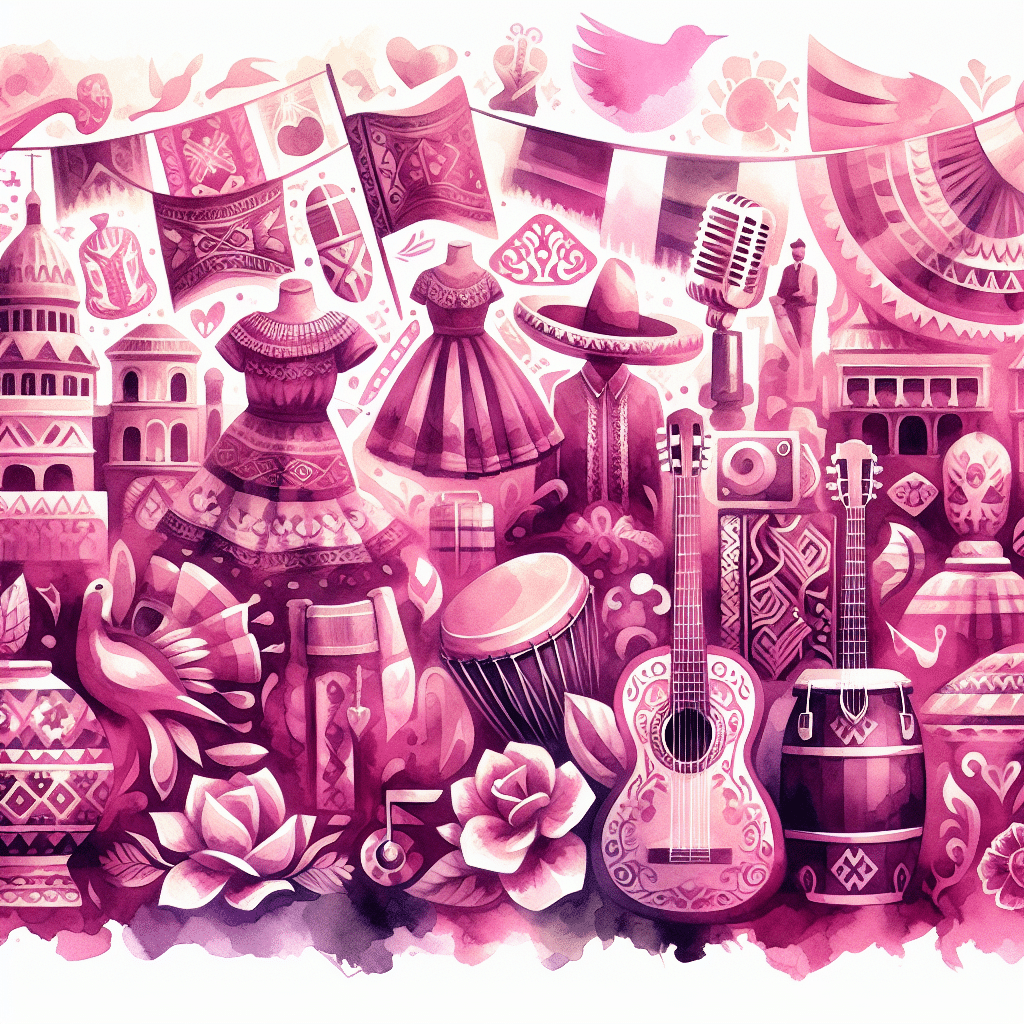
Vibrant Latino Festivals: Food, Dance & Culture
Latino Festivals and Celebrations
Latino festivals are a lively mix of traditions, dances, and, let’s be real, some of the best food you’ll ever taste. With roots that run deep in history and culture, these celebrations showcase the rich heritage of Latin America.
The Flavor of Latino Celebrations
The magic of Latino celebrations is in their variety. From the colorful streets of Mexico to the lively parades in Brazil, each festival brings its own unique flair. This variety reflects the diverse ethnic groups and ancestries across Latin America. The population includes mestizos (a mix of Amerindians and Europeans), mulattoes (a mix of African and European ancestry), and tri-racial groups known as pardos (a blend of Amerindian, European, and African heritage) (Wikipedia).
Every festival has its own taste, quite literally. Whether it’s the spicy chiles of Mexico or the savory empanadas of Argentina, food is always front and center. Music and dance also steal the show, with genres ranging from mariachi to samba, ensuring there’s something for everyone. To get a taste of these diverse celebrations, explore our section on festivals in Latin America.
| Festival | Country | Highlights |
|---|---|---|
| Cinco de Mayo | Mexico | Celebrates the Battle of Puebla with parades, mariachi music, and traditional foods |
| Carnaval | Brazil | Known for its samba parades, vibrant costumes, and street parties |
| Dia de la Raza | Mexico | Honors Mexico’s diverse population, rather than celebrating Columbus |
The Heart of Cultural Heritage
Cultural heritage is the soul of Latino celebrations. It’s a way for communities to honor their ancestors, keep their traditions alive, and pass them on to the next generation. Mexicans, for example, take great pride in their indigenous roots, celebrating festivals like Día de la Raza to recognize the country’s diverse population.
Traditional celebrations like Las Posadas and Día de los Muertos (Day of the Dead) are more than just parties; they are deeply rooted in history and spirituality. These events bring families together to share stories and remember loved ones. For a closer look at these meaningful traditions, check out our articles on traditional latino celebrations and latino heritage festivals.
Cultural preservation is also a hot topic. With globalization on the rise, there’s growing concern about cultural appropriation and the dilution of traditional practices. Communities are actively working to protect their cultural expressions and ensure their heritage is respected and celebrated authentically. For more on this, see our section on modern cultural preservation.
Latino festivals are a testament to the rich cultural heritage of Latin America. They serve as a bridge between the past and the present, ensuring that the vibrant traditions of Latino communities continue to thrive. So, whether you’re dancing to salsa in the streets or savoring a tamale at a family gathering, remember that you’re part of something much bigger—a celebration of history, culture, and community. And if you find yourself at a feast of the assumption or any other latino religious festival, don’t forget to bring your dancing shoes!
Traditional Mexican Celebrations
Cinco de Mayo
Cinco de Mayo, celebrated on May 5th, marks the Mexican victory over the French army at the Battle of Puebla in 1862. Often mistaken for Mexican Independence Day, which is actually celebrated on September 16th, Cinco de Mayo is a regional holiday primarily observed in the Mexican state of Puebla. However, it has also gained popularity in the United States, especially in cities with a big Mexican population.
In Puebla, the festivities are nothing short of epic, featuring parades, battle reenactments, and plenty of traditional Mexican food. It’s like a history lesson with a side of tacos. Meanwhile, in the U.S., Cinco de Mayo has become a day to celebrate Mexican culture more broadly, often with parties, music, and, of course, margaritas.
Fact Check:
- Date: May 5th
- Significance: Victory over the French at the Battle of Puebla
- Main Celebrations: Puebla, Mexico; U.S. cities with significant Mexican populations
| Celebration Location | Major Activities |
|---|---|
| Puebla, Mexico | Parades, Battle Reenactments, Traditional Food |
| U.S. Cities (e.g., Los Angeles, Houston) | Parties, Music, Mexican Cuisine |
For more on other vibrant Latin American festivities, check out our article on festivals in Latin America.
Day of the Dead (Dia de Muertos)
The Day of the Dead, or Dia de Muertos, is one of Mexico’s most important and unique celebrations. It spans from October 31st to November 2nd, coinciding with Halloween and All Souls Day. This festival is deeply rooted in pre-Columbian Mesoamerican traditions and has evolved into a colorful celebration that honors deceased loved ones.
The main event on November 2nd involves families visiting cemeteries to leave flowers, food, and tributes on the graves of their departed relatives. Elaborate parades featuring floats and costumes are also common. The centerpiece of the celebration is the “ofrenda,” an altar set up in homes with photographs, favorite foods, and mementos of the deceased (Journey Mexico).
Day of the Dead has even received international recognition. In 2008, UNESCO added Mexico’s “Indigenous festivity dedicated to the dead” to its list of Intangible Cultural Heritage of Humanity. The holiday has also gained popularity in the U.S., where more than 36 million people identified as being of partial or full Mexican ancestry as of 2016 (History.com).
Fact Check:
- Date: October 31st – November 2nd
- Significance: Honoring deceased loved ones
- Main Celebrations: Cemeteries, Ofrendas, Parades
| Celebration Element | Description |
|---|---|
| Ofrenda | Altars with photos, food, and mementos |
| Cemetery Visits | Families decorate graves with flowers and offerings |
| Parades | Floats, costumes, and music in towns and cities |
For more on the intersection of religious and cultural festivities, check out our article on latino religious festivals.
Both Cinco de Mayo and Day of the Dead are integral parts of Mexican culture, each offering a unique glimpse into the country’s rich heritage. Whether through the spirited reenactments of Cinco de Mayo or the heartfelt tributes of Dia de Muertos, these celebrations highlight the vibrancy and depth of Hispanic cultural events.
Mexican Independence Day
Mexican Independence Day is a feast for the senses, bursting with sound, light, and color. This day, packed with street parties, fireworks, flowers, and flags, showcases the rich cultural heritage of Mexico.
Celebration of Freedom
Every year on September 16th, Mexicans celebrate the start of their fight for independence from Spanish rule. The festivities kick off with “El Grito de Dolores” (The Cry of Dolores), a reenactment of Miguel Hidalgo’s 1810 call to arms. The President of Mexico echoes this call from the National Palace in Mexico City, followed by a dazzling display of fireworks, music, and dance.
| Event | Description |
|---|---|
| El Grito de Dolores | The President reenacts Hidalgo’s call to arms |
| Fireworks | Spectacular displays across the nation |
| Street Parties | Music, dance, and traditional food |
| Parades | Military and cultural parades showcasing national pride |
But it’s not just Mexico City that gets in on the action. Cities and towns across the country join in, each adding their own local twist to the national holiday. It’s a time when Mexicans come together to honor their history and express their national pride, summed up perfectly in the saying “Como México no hay dos” (There’s no place like Mexico) (Cultural Atlas).
Why September 16th Matters
September 16th is a big deal for Mexicans. It marks the day in 1810 when Miguel Hidalgo, a Catholic priest, made a passionate plea that kicked off the uprising against Spanish rule. This event, known as “El Grito de Dolores,” is celebrated every year, symbolizing the fight for freedom and the birth of a nation.
But it’s more than just a historical event. This day is a reminder of the resilience and unity of the Mexican people. The celebration blends indigenous traditions with Spanish colonial influences, making it deeply rooted in the country’s cultural identity (Chambers).
Curious to learn more about the cultural and historical significance of Mexican Independence Day? Check out our articles on festivals in Latin America and traditional Latino celebrations. You might also enjoy reading about the Feast of the Assumption and other Latin American holiday traditions for more insights into Latino heritage.
Mexican Independence Day is a vivid expression of national pride and cultural heritage, making it one of the most important Hispanic cultural events of the year.
Dia de la Raza
Honoring Indigenous People
Dia de la Raza, celebrated on October 12th in Mexico, is all about honoring the rich and diverse indigenous heritage of the country. Unlike Columbus Day, which focuses on Columbus’s arrival in America, Dia de la Raza celebrates the vibrant cultures and traditions of Mexico’s native communities. On this day, people don traditional clothing, participate in lively festivities, and pay tribute to their ancestors and the diverse roots of the Mexican population (Journey Mexico).
In Mexico, most folks are mestizo, a blend of European and Amerindian heritage. About 21.5% of the population identifies as Indigenous, highlighting the country’s deep connection to its ancient roots (Cultural Atlas). Dia de la Raza is a day to proudly celebrate Indigenous history, traditions, and the significant contributions these communities have made to the nation’s cultural tapestry.
Alternative to Columbus Day
Dia de la Raza offers a different perspective from Columbus Day, focusing on the diversity and resilience of Mexico’s population rather than the colonization narrative. This celebration is a reminder of the country’s ancient Indigenous heritage and a time to reflect on the impact of colonization while honoring the contributions of Indigenous communities (Cultural Atlas).
The day is packed with events and activities like parades, cultural performances, and educational programs that highlight the importance of preserving and respecting Indigenous cultures. It’s a day of pride and cultural affirmation, emphasizing the significance of embracing one’s heritage.
Curious about more traditions and celebrations in Latin America? Check out our articles on festivals in Latin America and Latino heritage festivals.
| Population Group | Percentage in Mexico |
|---|---|
| Mestizo (European and Amerindian heritage) | Majority |
| Indigenous | 21.5% |
| European ancestry | Significant minority |
| Other heritages (Central American, South American, Middle Eastern, Asian, African) | Growing communities |
Dia de la Raza isn’t just a celebration; it’s a powerful statement of identity and a tribute to the rich tapestry of cultures that make up Mexico. By recognizing and honoring Indigenous people and their contributions, this day fosters a deeper appreciation for the diverse heritage that defines the nation.
Las Posadas Tradition
Las Posadas is a lively celebration in Mexico from December 16th to 24th. This cherished event reenacts Joseph and Mary’s search for a place to stay before Jesus’s birth.
Christmas Festivities
Las Posadas is the ultimate pre-Christmas bash. For nine nights, the community gathers for processions, songs, and fun. Each evening, people dressed as Joseph and Mary go from house to house, singing and asking for shelter. The hosts, playing innkeepers, initially turn them away before finally offering a place to stay. This act commemorates the nativity story and brings everyone closer.
But it’s not just about caroling. Participants break piñatas, enjoy traditional foods, and sip on warm drinks like ponche, a fruity punch. It’s a mix of religious observance and social gathering, kicking off the holiday season in style. For more on Latino holiday traditions, check out our article on Latin American holiday traditions.
| Night | Event |
|---|---|
| 1-8 | Processions, singing, breaking piñatas, and feasting |
| 9 | Special celebration with more elaborate festivities and Mass |
Reenactment of Joseph and Mary’s Journey
The heart of Las Posadas is the reenactment of Joseph and Mary’s journey. Participants, often kids, dress up as the holy couple and lead the procession, knocking on doors and singing traditional Posada songs. The community plays along, creating a playful yet meaningful reenactment of the nativity story.
The final night, December 24th, is the big one. It involves a larger celebration, sometimes including a special Mass. The event ends with a joyful gathering where everyone reflects on the journey and the importance of community and faith. For more insights into religious festivals, explore our piece on Latino religious festivals.
Las Posadas is more than just a celebration; it’s a way to preserve cultural heritage and share it with the younger generation. It embodies the spirit of togetherness and generosity, which are at the core of many traditional Latino celebrations.
For those who want to dive deeper into how such traditions intertwine with other significant events, visit our articles on Feast of the Assumption and Virgin Mary celebrations.
By participating in Las Posadas, people not only honor their faith but also strengthen community bonds, making it one of the most cherished festivals in Latin America.
Latin American Cultural Diversity
Latin America is a colorful mix of cultures, blending Indigenous, Western, African, and Asian influences. This rich blend shines through in the region’s diverse cultural events, making it a must-see for Hispanic cultural events.
Indigenous Cultures’ Impact
Indigenous cultures have left a lasting mark on Latin American traditions, from food to festivals. Take ‘Día de la Raza’ in Mexico, for example. Instead of celebrating Columbus, it honors the nation’s Indigenous heritage (Cultural Atlas). This day celebrates Mexico’s diverse population, a mix of mestizo, Indigenous, and other ethnic groups.
Indigenous influences also show up in music, dance, and religious practices. The ‘Day of the Dead’ (Día de los Muertos) blends pre-Columbian traditions with Catholicism, celebrating the belief that the deceased visit their families during this period (Cultural Atlas). This unique relationship with death highlights the deep-rooted Indigenous customs still alive in modern celebrations.
Western and Indigenous Traditions Mix
Latin America’s culture is a fascinating blend of Western and Indigenous traditions. European immigrants who arrived in the late 19th and early 20th centuries brought new influences, especially in the Southern Cone (Argentina, Uruguay, and southern Brazil). These areas now have a majority population of European descent, adding another layer to the cultural mix.
The fusion of Western and Indigenous elements is clear in many aspects of Latin American culture. Religious festivals, like the Feast of the Assumption, blend Catholic rituals with Indigenous practices, creating unique celebrations that reflect the region’s dual heritage. The culinary scene is also a delightful mix of Indigenous ingredients and European cooking techniques, resulting in flavors that are both familiar and exotic (Cultural Atlas).
| Region | Major Ethnic Groups | Cultural Influence |
|---|---|---|
| Mexico | Mestizo, Indigenous | Día de los Muertos, Día de la Raza |
| Southern Cone (Argentina, Uruguay, Southern Brazil) | European (Italian, Spanish, German) | European festivals, culinary influences |
| Andean Region (Peru, Bolivia) | Indigenous (Quechua, Aymara), Mestizo | Indigenous festivals, traditional dances |
Latin America’s cultural diversity isn’t just history; it’s a living, breathing phenomenon. From high culture like literature and art to popular culture like music and dance, the region’s festivals and celebrations reflect a continuous blending of traditions (Wikipedia).
Want to dive deeper into specific traditions? Check out our articles on traditional Latino celebrations and Latino religious festivals. Curious about how modern practices keep this rich heritage alive? Visit our piece on modern cultural preservation.
Music and Dance in Latin America
Latin American music and dance are the heartbeat of any fiesta. From the infectious salsa beats to the sultry tango steps, the rich variety in music and dance styles showcases the vibrant cultural heritage of the region.
The Melting Pot of Latin Music
Latin American music is a beautiful mix of indigenous, Spanish, African, and other influences, creating a unique and lively sound. Traditional instruments like the marimba, quena, and charango add a special touch to the music.
Popular Latin American music genres include:
- Salsa: Born in the Caribbean, salsa mixes African rhythms with Spanish melodies. It’s the life of any dance party.
- Merengue: This fast-paced genre from the Dominican Republic will get anyone’s hips moving.
- Bachata: Also from the Dominican Republic, bachata is a slower, more romantic genre, perfect for close dances.
- Tango: From Argentina, tango is both music and dance, known for its dramatic and passionate style.
- Cumbia: With roots in Colombia, cumbia blends indigenous, African, and Spanish influences, making it a party staple.
- Samba: Brazil’s samba is synonymous with Carnival, featuring infectious rhythms and vibrant energy.
| Genre | Country of Origin | Key Characteristics |
|---|---|---|
| Salsa | Caribbean | African rhythms, Spanish melodies |
| Merengue | Dominican Republic | Fast-paced, energetic |
| Bachata | Dominican Republic | Romantic, slower tempo |
| Tango | Argentina | Dramatic, passionate |
| Cumbia | Colombia | Blend of indigenous, African, and Spanish influences |
| Samba | Brazil | Carnival music, high energy |
Want to know more about these genres? Check out our article on festivals in Latin America.
Traditional Latin American Dances
Latin American dances are as varied as the music, each with its own style and cultural significance. These dances are often performed at traditional Latino celebrations and festivals, adding to the festive vibe.
- Salsa Dance: Salsa dancing is as lively as the music, with lots of spins, turns, and intricate footwork. It’s a social dance that’s popular in clubs and parties.
- Merengue Dance: With its simple two-step pattern, merengue is easy to learn and a hit at any dance gathering.
- Bachata Dance: A close partner dance, bachata is known for its romantic, sensual movements.
- Tango Dance: Tango is famous for its dramatic flair, sharp movements, and close embrace.
- Cumbia Dance: Cumbia dance is performed in a circular pattern, often featuring couples who move to a rhythmic, swaying beat.
- Samba Dance: Samba dancers are known for their rapid footwork and energetic movements, making it a highlight of Brazilian festivals.
If you’re keen on learning these dance styles, check out our guide on tips for straightening curly hair, which includes techniques for mastering these moves.
Latin American music and dance are more than just entertainment; they are expressions of cultural identity and heritage. Whether it’s the rhythmic beats of salsa or the passionate steps of tango, these traditions bring people together, celebrating the rich diversity of Latin American culture. For more on the cultural fusion in Latin America, visit our article on latin american holiday traditions.
Peruvian Cuisine
Peruvian cuisine is a tasty mix of flavors that show off the country’s rich culture. From the Andes mountains to the coast, Peruvian dishes celebrate the nation’s diverse heritage with every bite.
A Melting Pot of Flavors
Peruvian food is like a big, delicious party where everyone brings their best dish. It’s a mix of Amerindian and Spanish traditions, with a dash of African, Arab, Italian, Chinese, and Japanese influences. Thanks to Peru’s varied climate, there’s a huge variety of plants and animals to cook with, making the food as diverse as it is tasty. This blend of cultures creates a unique eating experience that tells the story of Peru’s history and geography.
Must-Try Peruvian Dishes
Let’s check out some of the most popular dishes that make Peruvian cuisine a hit at any gathering.
| Dish | Description |
|---|---|
| Anticuchos | Skewers of marinated meat, often beef heart, grilled to perfection. A street food favorite that packs a savory punch. |
| Ceviche | Fresh fish marinated in lime juice, mixed with onions, cilantro, and aji peppers. This tangy seafood dish is a must-try. |
| Humitas | Steamed corn cakes wrapped in corn husks, similar to tamales. Filled with cheese or meat, they make for a comforting snack. |
| Pachamanca | A traditional Andean dish where meats and vegetables are slow-cooked underground with hot stones. It’s a communal feast that’s as much about the process as it is about the taste. |
For more tasty insights, don’t miss our article on festivals in Latin America and traditional Latino celebrations.
Peruvian cuisine shows how the country blends different culinary traditions into something special. Whether you’re enjoying a plate of ceviche or savoring the smoky flavors of pachamanca, you’re tasting a piece of Peru’s rich cultural heritage. Curious about how these dishes fit into bigger celebrations? Check out our piece on the feast of the assumption to see how food and festivity go hand in hand in Latin America.
Keeping Hispanic Culture Alive
In a world where TikTok dances and Instagram filters rule, keeping the essence of Hispanic cultural events alive is a big deal. Let’s see how modern efforts are making sure indigenous expressions stay protected and cultural appropriation is kept in check.
Protecting Indigenous Expressions
Back in 2021, Mexico passed a law that makes it illegal to use Indigenous and Afro-Mexican cultural expressions without permission (Chambers). This law aims to protect the intellectual property of indigenous communities and stop their culture from being exploited.
Artists, designers, and indigenous communities are now working together to make sure cultural products stay true to their roots. This not only promotes inclusivity but also gives indigenous voices a platform in cultural industries. Imagine your abuelita’s embroidery being celebrated worldwide, but with her permission and a fair share of the profits.
| Protection Efforts | Description |
|---|---|
| Legal Protections | Laws against unauthorized use of cultural expressions |
| Artistic Collaborations | Partnerships between artists and indigenous communities |
| Intellectual Property Rights | Protecting traditional knowledge and symbols |
Want to know more about how indigenous traditions are celebrated? Check out our article on traditional latino celebrations.
Avoiding Cultural Appropriation
Cultural appropriation is like crashing someone else’s family reunion and wearing their family t-shirt. It’s awkward and disrespectful. To avoid this, people should research the history and meaning of cultural elements, get permission from the community, and use cultural elements respectfully.
Here’s a quick list of Dos and Don’ts to avoid cultural appropriation:
- Do: Research the cultural significance of elements before using them.
- Do: Get permission from the community or individual.
- Do: Use cultural elements respectfully and mindfully.
- Don’t: Use cultural elements in a stereotypical or offensive way.
Mexico’s rich cultural heritage, a mix of indigenous traditions and Spanish influence, is a source of national pride. Sharing this culture with the world is great, but it must be done respectfully.
For more on cultural celebrations, visit our pages on festivals in latin america and latino heritage festivals.
By working together and respecting cultural contexts, the vibrant traditions of Hispanic cultural events can be enjoyed and preserved for generations. So, next time you’re at a fiesta, remember: it’s all about celebrating with respect and love.




